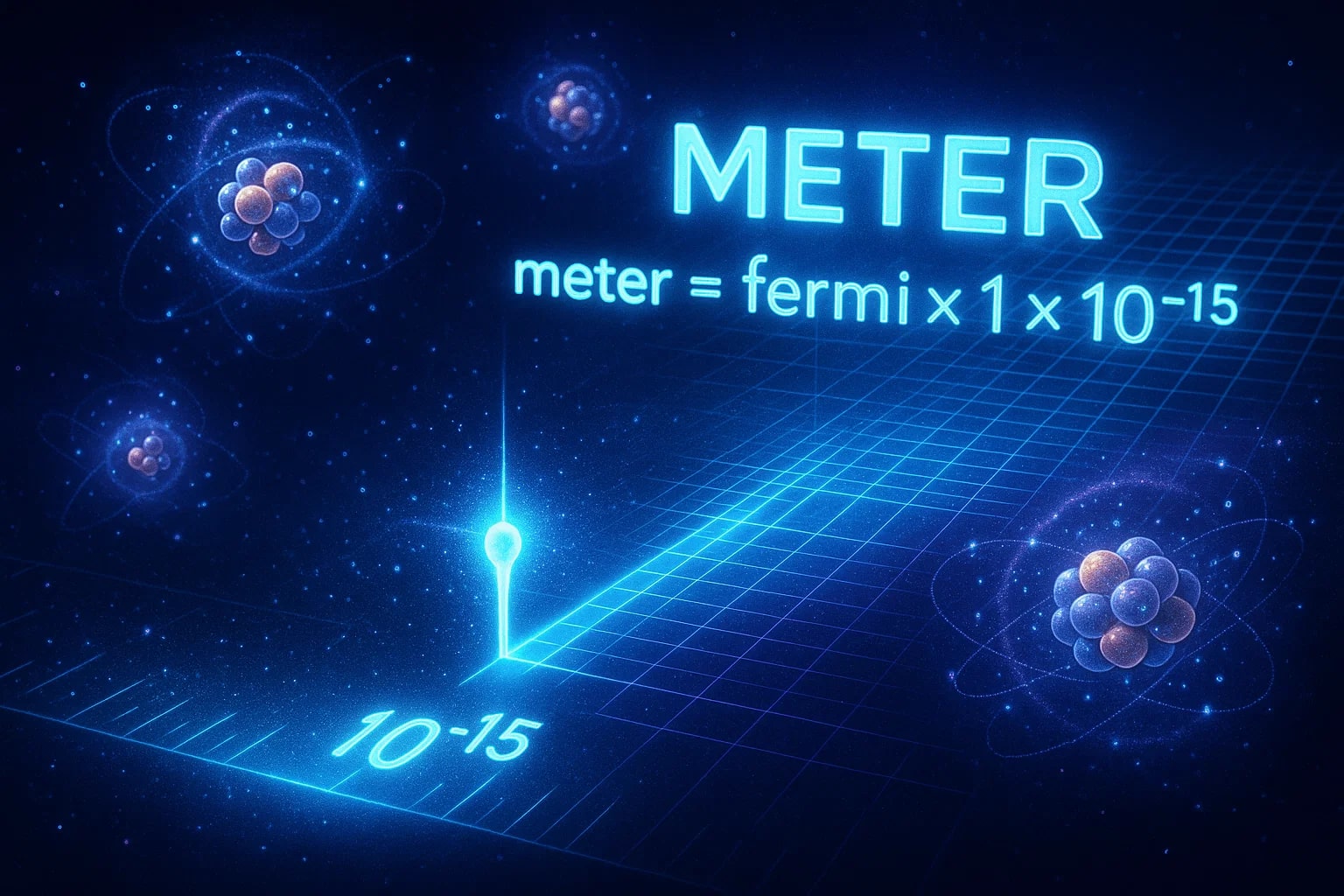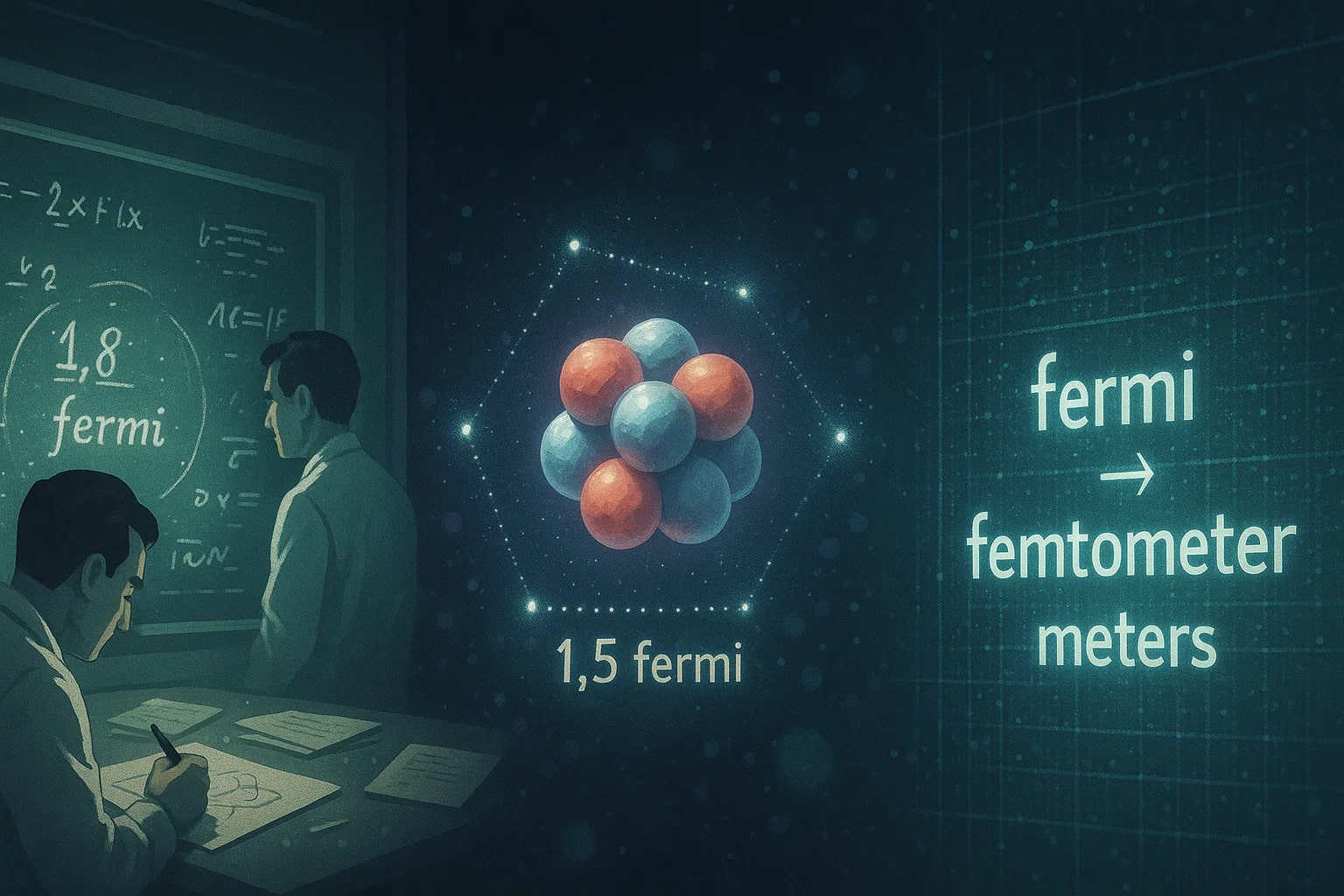fermi to meter – How to convert fermi to m
The conversion from fermi to meter is essential when exploring nuclear physics and atomic science. A fermi is another name for the femtometer, used to describe the size of atomic nuclei and subatomic particles. The meter, however, is the SI base unit for length. Learning how to convert fermi to m bridges a specialized scientific scale with the universal standard.

What is a Fermi?
A fermi equals 1 femtometer (1 fm) and represents one quadrillionth of a meter:
1 fermi = 10⁻¹⁵ m.
It was named in honor of Italian physicist Enrico Fermi, who made significant contributions to nuclear science.
What is a Meter (m)?
The meter is the SI base unit of length, used worldwide for science, engineering, and daily life. It is defined by the speed of light in a vacuum, ensuring accuracy and consistency at all scales.
How to Convert fermi to m
The formula is:
meter = fermi × 1 × 10⁻¹⁵
For example, let’s convert 2 × 10¹⁵ fermi into meters:
meter = 2 × 10¹⁵ × 10⁻¹⁵ = 2 m
So, 2 × 10¹⁵ fermi = 2 m.
For more conversions, you can use the Length Converter or explore the wider Conversion Tools.
Do you know?
-
The term fermi was widely used in nuclear science before femtometer became the official SI-based name.
-
A typical nucleus of a heavy atom, like uranium, measures about 15 fermis in diameter.
-
The word fermi honors Enrico Fermi, a Nobel Prize–winning physicist known for his work on nuclear reactions and quantum theory.
-
While scientists today prefer “femtometer,” fermi is still used informally in physics communities.
Atomic Distances in Perspective
During the mid-20th century, nuclear physicists relied on fermis to describe the distances they studied. For example, when measuring how close protons and neutrons sit inside the nucleus, the unit of choice was the fermi. This made communication easier among scientists working on atomic models and nuclear energy.
Over time, as the SI system standardized scientific language, femtometer replaced fermi in official contexts. Still, the conversion remains the same, and many physics papers and textbooks continue to use fermi interchangeably.

From Legacy to Standardization
The conversion from fermi to meter illustrates how science balances tradition with precision. The fermi keeps alive the legacy of Enrico Fermi and mid-20th-century nuclear research, while the meter ensures consistency across all scientific disciplines.
By applying one simple formula, you can interpret older texts, understand modern research, and connect both worlds seamlessly.

